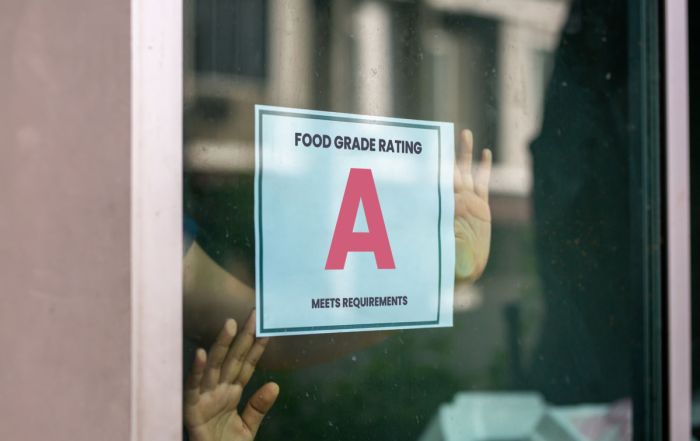Crafting Effective SOPs to Serve as your Food Safety Foundation
As I was writing my last blog, I realized I referenced standard operating procedures (SOPs), assuming that every foodservice operation has them. I know that most chain operations have them, but I suspect that several independent operations may not have a set of SOPs developed for their operations. Because of my suspicion, I made a few calls to friends I know who manage independent operations to find out if I was correct or not. While I only called a handful of operators, I discovered that about 50% of those whom I called did not have SOPs in their operation. Thus, I thought I might focus my blog this week on where to start in crafting effective SOPs for your operation.
Food safety is a top priority in any foodservice operation, and you must agree, otherwise you would not be reading this blog right now. Having clear, structured processes in place is essential for maintaining high standards. Good SOPs are one of the most effective ways to ensure food safety is consistently upheld.
SOPs are detailed, written instructions that guide employees in performing tasks correctly and safely. For foodservice operations, they help minimize risks like contamination, foodborne illness, and improper handling.
Before creating your SOPs, it’s important to understand the key food safety regulations and guidelines that apply to your operation. These regulations will vary by location but generally cover aspects like safe food handling, storage, temperature control, and hygiene. Familiarize yourself with local health codes and national standards, such as those set by the FDA Food Code or ServSafe, to ensure compliance.
Identify the critical food safety processes within your operation – and each operation will be different. Are you an assembly-serve foodservice with minimal cooking on-site or are you a fine dining operation where everything is made from scratch? Regardless of the type of production system you use, there are SOPs that you will need and determining these processes is a vital first step. These are the areas where errors or lapses in procedures can result in foodborne illnesses, contamination, or safety hazards. These high-risk areas are where SOPs will make the biggest impact.
Some critical processes to focus on:
Once you’ve identified the key processes and risks, it’s time to develop detailed SOPs that cover each of these identified areas. Each procedure should be simple, clear, and easy to follow, leaving no room for ambiguity.
…the areas where errors or lapses in procedures can result in foodborne illnesses [and] these high-risk areas are where SOPs will make the biggest impact.
Each SOP should include a detailed, step-by-step description of the task, from start to finish. Be specific about what needs to be done and who is responsible for each step. For example, if the SOP is about proper handwashing, it should detail the steps of handwashing, how long it should take, and when employees should wash their hands (for example, before handling food, after touching raw meat, when returning to the kitchen, etc.).
Within the SOP, be sure to list any tools, equipment, or supplies needed to complete each task safely. For example, if an SOP involves using a food thermometer, specify the types of thermometers to use and how to calibrate them. Many food safety procedures require ongoing monitoring (e.g., temperature checks, cleaning schedules). Clearly define how often these checks should occur and who is responsible for them.
If your head is spinning with all the work this will take, there are some tools that could help. Two of my favorites are the Iowa State University SOP documents and The Institute of Child Nutrition SOP documents. Both are available free of charge. These are great places to start, but be sure to adapt them to your operation and your local food safety regulations.
SOPs are only effective if your staff understands and follows them. Regular training is essential to ensure that employees are familiar with food safety procedures and know how to apply them in their day-to-day tasks.
It is also important to remember that once you have your SOPs established, food safety guidelines, regulations, and industry best practices can change over time. It’s important to periodically review your SOPs to ensure they remain up to date and compliant with the latest food safety standards. Risk Nothing.
READ MORE POSTS
Embracing Technology for Enhanced Food Safety in Foodservice Operations
Technology. We love it, we hate it. I’ve always been fascinated by technology; I remember getting my first Blackberry in the mid-90s and thinking it was the pinnacle of technological advances. Before that, I remember ordering a dictation program in college that was going to revolutionize the way I “typed” my assignments. Looking back, it really wasn’t worth the box that the program came in. Now, we have ChatGPT that will write the entire paper for us!
Meat Color and Doneness: Persistent Pinking
Late in June, my family and I were able to visit the Black Hills, an area of the country in which I have not had the opportunity to spend much time. One evening, as we dined at a local restaurant, I observed a table across the dining room sending back a dinner. While I couldn’t hear the entire conversation and I certainly wasn’t trying to eavesdrop, it was apparent that the customer was unhappy with the cooking of their hamburger and was sending it back because it was too pink in the middle. That immediately brought to my mind the phenomenon known as persistent pinking. A term I became familiar with because of work done by some colleagues here at Kansas State, which they present each summer to a group of foodservice operators who join us on-campus for an in-depth week-long look at all things food safety.
Quat Binding – Why this Can Have a Disastrous Impact on Your Sanitation Program.
In June, I had the opportunity to represent FoodHandler and speak on food safety behavior for customers of Martin Bros. Distributing in Waterloo, Iowa. One of the questions that was asked caught me a little off guard. The question was about quat binding. It caught me off guard not because it was a bad question, but only because it was not something I had previously been asked nor had not yet been exposed to the phenomenon. However, I soon learned that in certain jurisdictions, it is resulting in changes to how sanitizing cloths are to be stored in sanitizing buckets (or not) in the foodservice industry. When I returned home from the trip, I had to dig into it to learn about what quat binding is and how it might impact foodservice operations.
Are Grades for Foodservice Inspections a Good Idea?
I generally try to stay away from controversial topics in my blog, but this is one I thought it might be interesting to discuss. Occasionally on my travels, I will come across a state or a local jurisdiction that requires foodservice inspection scores be posted in the window of the establishment. The idea is to allow would-be customers the ability to see how the foodservice operation in which they are about to eat scored on their latest health inspection.










